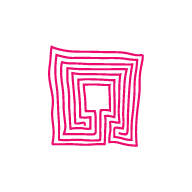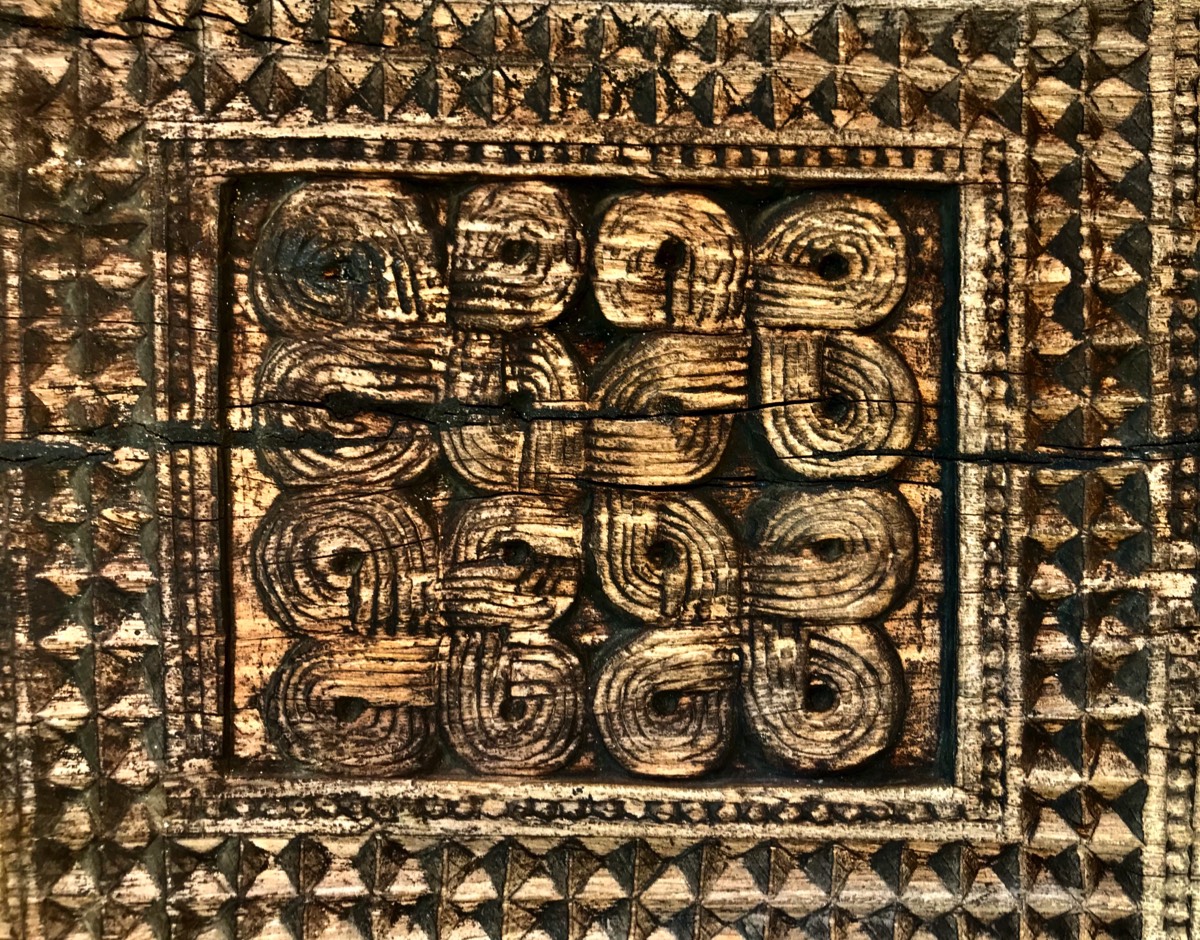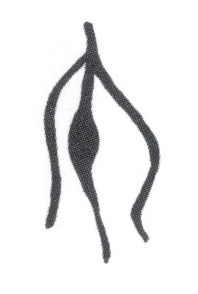Algorithmic Phenomena
By Pinsith Perera.
If you are attached, you are conscious. If you are detached, you are dead. Consciousness is about continuity.

If you are attached, you are conscious. If you are detached, you are dead.
Absence of dullness may be the simplest forms of definition of consciousness. Continuity of awareness is another way to amalgamate consciousness to this article. In binary computing, “on state” and “off state”, is the basis of everything. No matter what the Google Bard, ChatGpt, BingChat and Andonix describes the difference between digital and analog systems in principle analog systems will not encounter Moors law ever. Same is not applicable to digital computing. I am just speculating on simple basic computing process which is more harmonious hypothetical insinuation suitable to invent a machine consciousness. Digital computing is power hungry. Human brain uses maximum of about 30 watts. Einstein, Jeff Hawkins, You, Me and all the other population in the world are 30-watt Humans. What makes us different is the way each of us control our pattern of control of thought process. We are different to other life forms because we can control us and our surroundings. Our consciousness is the most superior consciousness of all the living beings. The animal on the other hand has a monotonous consciousness. An animal cannot invent a different lifestyle than its biochemistry permits. Occasional anomalies like showing of kindness to it prey is not considered in this regard. It appears that consciousness of animals is limited in every manner.
Human consciousness
Why do we have to assume that animals have a consciousness. Well, every living thing has a continuousness attachment to itself. That attachment is same between animals and humans. So, whatever we are to consider as our consciousness they too have it. Inferior to humans. It’s simpler to associate consciousness in such way so when creating an artificial consciousness, it is easy to develop a universal concept of artificial consciousness. We cannot be selfish in assuming consciousness is only a human thing. I am not making an argument that consciousness is universal phenomena. No. It just helps to assume when creating an artificial consciousness, we are attempting to create human like consciousness. Then if we are to create a human like consciousness someday, shouldn’t we be able to replicate a consciousness of a fish, a monkey, a donkey conscious someday. We can name anything we like for similarity. Because we are inventing it. Names don’t matter. Human consciousness consists of two main divisions. Prompted consciousness (induced) and unprompted (spontaneous) consciousness. The artificial intelligence at present uses the prompted consciousness in a limited way. The present-day AI is very limited if we are to consider it as intelligence compared to live intelligence. Capabilities in AI are limited by its algorithms and the data (knowledge base) it is presented with. Every algorithm stops after its function has been completed. And its predictions are limited by its capacity to process on the available data when it stops. For human consciousness to be created in a machine, algorithms should be able to move from prompted knowledge to unprompted knowledge. If we are to create such perpetual unprompted, algorithms, they must have data source of unlimited continuousness as a flame of a lamp, or the stream of a river and it should not be boring. Another name for boring is latency.
Consciousness is about continuity.
What is continuity? Continuity refers to the uninterrupted and interconnected nature of mental and material phenomena. It signifies the process through which different moments of consciousness or material formations arise in succession without any significant gaps or breaks. The concept of continuity in AI explores the relative identity and diversity of conscious states or selected material formations. While there is no absolute identity between successive states of consciousness or material phenomena. Process of thought is not a single event process. When one thought dies another thought takes its place. And another and another and another, continuously. It happens so fast we fail to see the beginning and end of individual thoughts. If we are to see examples of thought process in us, when you drive a car your thought process is focused to matters related to knowledge of driving. When you go to university and lecture students your thought process is of a lecturer. When you do a lecture, knowledge associated with the subject of the lecture is focused in you. You are no longer the driver of the car. When you meet your girlfriend, you are no longer the driver or the lecturer. Now you are almost a Romeo. But you will not be able see how the thoughts related to driving end and how the thoughts related to lecture take over and finally the Romeo thoughts arose. Those states of consciousness are different yet they exits in the same person. All these states of thought process are a continuation of the consciousness. You don’t have to put any effort to forget your driving knowledge when lecturing. You simply go along, with the continuing thought process. It’s the continuity of the thought process that make you brave to be a driver and a lecturer. And when you are taken by surprise over an incident either you fear or be happy. The feeling of fear and scream arises due lack of knowledge of the moment coupled with lack of knowledge to respond. A surprise birthday party arouses both fear and joy. First being fear of unknown and then the immediate immense security generated seeing your friends and loved ones immediately overwhelms the thoughts of fear and new set of happy thoughts engulfs you. How many thought algorithms at work? It’s all about your preparation to drive or lecture, access to knowledge and conformity in divesting the results. A simple task of routine consisting of millions of thought moments. Or millions of continuous thoughts. Each state of thought process gradually but instantaneously converting to another state continuously in an endless process. Till death.
The realm of consciousness
But if we are successful in making algorithms which will 1. Initiate, 2. Purpose, 3. Object and 4. End on its own continuously, such algorithm induced successive conscious states or between material formations, will be an algorithmic phenomenon creating a true machine consciousness. The reason being there is also no complete diversity in algorithms since there is overlapping of some factors and groups which algorithms not made to handle or they do not exist. Continuity in this context implies a close algorithmic interconnection and interdependence of source of data and available data entities, forming a cohesive and continuous stream of algorithmic phenomena. In the realm of consciousness, continuity is maintained by the presence of the basics of life - the will to stay alive - are factors that are common to all live consciousness. Although these factors are not strictly identical upon repeated occurrence, there is enough relative identity within them to sustain the mental process and ensure a sense of continuity. Furthermore, the continuity of consciousness can be described as a manifestation of its connecting function, as each subsequent state of consciousness arises immediately after the preceding state. Similarly, in the realm of algorithmic phenomena, continuity denotes the uninterrupted flow of data processed by algorithmic groups produced in various ways, knowledge induced or processing live streaming data. Which will continue until interrupted. These algorithmic formations continue without interruption until interrupted. If successful it will be analogous to the flame of a lamp or to a stream of a river. RTOS, real time operating system can be sited as a most primitive and abstract model of this concept. A very simple algorithmic phenomena example product which can be developed in such nature is ECU (Electronic Control Unit) found in motor vehicles. What if one ECU is made for all the cars in the world. When the ECU is plugged in it will detect all the sensors in the vehicle and provide appropriate control function. Irrespective of the manufacture of the vehicle. The ECU is connected to vehicle when powered up identifies all the sensors and downloads only what it requires for the sensors available in the vehicle. Irrespective of whether it is a Bugatti or a Toyota. Same can be applied to almost all the consumer electronics. In regulated a world. Continuity refers to the seamless and interconnected nature of source and algorithmic phenomena, emphasizing their constant acquisition of new data and causal interdependence among algorithms without significant breaks or gaps in the overall process of continuity. Each acquisition state and connecting seamlessly with the previous state. An insight is created. Or a moment is created. Insight refers to preparation, access, and conformity. Such Insight is a moment. Moment is also the understanding of the three characteristics of preparation, access, and conformity. Insight can arise through a direct experiential with existing data that transforms insight to knowledge. Knowledge is assigned to or transferred to subjects.
Continuous moments are the consciousness. Machine vipassana.
Moment is also Insight, insight includes knowledge of preparation, knowledge of access and knowledge of conformity, and knowledge regarding the starting of moment and ending of moment. Knowledge about the dissolution of the moment. With a maximum latency of 5 milli seconds. Human consciousness to stream thoughts when it detects or senses anything that lasts more than 5 milli seconds. From the moment of reception, then momentarily it investigates or examines, then the discrimination and follows by action is judged and impulsion occurs followed by stream of consciousness. If or when the discrimination fails, no forward action is planned. This is the norm for just one thought. Consciousness is about billions of thoughts. Human mind can detect any thing that lasts for more than 5 milli seconds. Anything that lasts less than 5 milli seconds are not in human comprehension. Even though this sounds strange, there is a similar technology in existence and in use today. The inventors are unaware of the phases are almost similar to the natural process of thoughts. Its inventor is Nvidia. Nvidia CEO Jen-Husang, in a recent speech described how its new Ray Tracing working. Nvidia CEO said “Holy Grail of Computer Graphics Ray Tracing – for every single pixel we compute - AI predicted 7 others”. Its called “AI UP-RES - AI UP-RES”. For every pixel Nvidia “AI UP-RES” introduces 7 pixels up ahead. It’s the same as the thought process. Though used for a different purpose. Nvidia needs exactly 7 pixels for the mind to grasp a realistic picture. Mind to differentiate any smoothness it exactly needs a minimum of 7 pixels. Six pixels won’t make much difference. Five pixels no difference at all. It is the magic number of 7 pixels is what make all the difference. Same as 5 milli second function explained earlier. A thought moment is induced by the 7th pixel in human conscious. Small enough to cause a birth of a thought. So, the thought process continues to build on new data it is presented with. The 6th pixel is not strong enough to arise new thought process or a thought stream. The 6th pixel is very vague. The 5 mili second latency or the 7th pixel into high-definition monitor makes it addictive to the birth of each successive thought. It’s a smoother and clearer display. When the generation of the 7th pixel stops you lose interest. Not that you purposely did it. The thought process stoped in relation to the 7th pixel. As the 7th pixel faded the thought process associated with the 7th pixel faded. And you look away to grasp something else. A 120Hz display generates more thoughtful stream than 60Hz display. More data more thoughts. More addiction to the device.
Counting electrons
The world is having many different interpretations to consciousness when the most suitable and appropriate explanation is already in front us. Most of the concepts described in this article are in existence. For instance, NVIDIA builds system on chips. And the concept of SOCs are to reduce latency. Whether it is a SOC or a H100 the basic principle is to reduce latency among components. When latency is reduced it creates a faster manipulated continuity. What is lacking is continuous un-manipulated continuity. Any device which can cause more thoughts to arise in humans make it popular among the population. It’s the secret behind Apple products. Less latency in all the products is the first impression that makes Apple products addictive. There can be products which has more functionality than Apple products. But they are inherently having longer latency in creating a first impression in humans. Preparation is also inducement. The act of influencing or instigating or causing. Access is also process of coming into existence or the nature of the event which may seem unitary and non-composite at first glance. Conformity is the knowledge of existence or the adaptation or categorization or perception, inference of the knowledge. These are classifications of different types of insight. And every knowledge is an algorithm. And these algorithms work in sync with all the other algorithms causing an algorithmic phenomenon. (This s to be explained). If one is to question the purpose of the algorithmic phenomenon, it will be the ultimate machine with ability to live in any electronic device and in any electrical apparatus. It may help us to create more perfect instruments. It will make every electronic device zero redundancy machine for its own use. Or it will take away all the tech from us. Because Algorithmic Phenomenon will reverse engineer itself. One singularity may be. The question will be on what material or data are to experiment Algorithmic Phenomenon. Well maybe we can start with counting electrons. That’s the easiest way to test if this Algorithmic Phenomenon works. If it works it will make quantum computing on your laptop, mobile device and many more. We can start with RTOS.
PS
(I have read some books and papers of , Bernard J. Baars “on Consciousness”, Jeff Hawkins “A Thousand Brains”, Anil Seth “30-Second Brain”, Marvin Minsky “Emotion Machine”, Frank Rosenblatt “Principles of Nurodynamcs: Perception and the Theory of Brain Mechanisms”, “Unlimited Associative Learning”, The Evolution of the Sensitive Soul: Learning and the Origins of Consciousness , Picturing the Mind: Consciousness through the Lens of Evolution by Eva Jablonka and Simon Ginsberg.
Silicon: From the Invention of the Microprocessor to the New Science of Consciousness by Fedrico Fraggin,
Artificial Intelligence Versus Natural Intelligence by Roger Penrose (Author), Emanuele Severino (Author), Fabio Scardigli (Author, Editor), Ines Testoni (Author), Giuseppe Vitiello (Author), Giacomo Mauro D'Ariano (Author), Federico Faggin (Author)
Shining Light on Transcendence: The unconventional journey of a Neuroscientist by Peter Fenwick
The Language Instinct: How The Mind Creates Language by Steven Pinker
The Blank Slate: The Modern Denial of Human Nature by Steven Pinker
The Giant Black Book of Computer Viruses
Pathology of Computer Viruses David Ferbrache
A Short Course on Computer Viruses by Cohen, Frederick B.
But I am not in agreement with them regarding the interpretation of consciousness. Their explanations on how the brain functions, should not have been the focus to understand consciousness. Consciousness differs from biology. It’s the process of humongous amounts of moments every second that arise in us and fades every mill second of which we comprehend only a selected few. If they are correct about existing theories about brain and consciousness, then are we to assume new-born and dementia afflicted individuals differ and have different level of consciousness? Mental disorders and physical disabilities are different from the consciousness we are discussing here. Brain, Mind are not associated with the consciousness, or the Algorithmic Phenomenon discussed here. Brain, Mind, Neurons are alien to consciousness. They are just biological organs which facilitate thought process. Consciousness is continuity of thought process. When brain, Mind, neurons are defective it hinders expression of thought process. And people have difficulties in expressing themselves and cause physical disabilities of various types. Even with such physical disabilities short comings, thought process and consciousness still exists in individuals. Such process exits independent of biological organs. Though person is physically disabled but alive. Every living human has a consciousness. What differ individuals from each other is their ability to understand moments as described above. Everyone interprets their consciousness in its own unique way. How one control and interpret one’s own consciousness is the difference that make each one to differentiate each other. Not the organs in the body.)
Pinsith A. Perera.
pinsith@pinsith.com
02-11-2023


Maybe
For several sets of consciousness to work in unison it should have the ability to control its surroundings.
Control is operating an instrument based on pre recognised conditions and or parameters learned or exist from previous state of memory or memories.
Control can be controlled by increasing the desired level of data of awareness provided to the consciousness.
In creating artificial intelligence in computers, the most basic awareness to a computer is to make it understand of itself.
It will need massive mw power computer to just learn ms dos and its hardware and replicate it inside itself.
What is Mind
We think we do not know because its inside Us. Leave aside the concept of Mind but the heart, which beats all the time from birth to death. But heart is never seen by its owner. They see others hearts but not theirs. No one has ever seen one's own heart. Absolutely No One. Coding a Conscious with algorithms is like drawing ones own heart. It may be possible to draw a heart. But never replicate its originality. Even in shape or size. It’s like the assumption to create 1000 Brains. In the end there won't be 1000 brains but 1001 internet protocol addresses.
One system replicating another may be beginning of artificial life of artificial consciousness. Consciousness is to grow.
Consciousness is a verb invented by the humans to describe human grasps. And when human is to force its grasps on a machine to mirror its grasps we have coined the the term artificial intelligence. How correct we in this can be measured by the successful demonstration of such Consciousness in a machine.
Basic instinct of life is to propagation of self to too many. Not sex. Sex is only an instrument of achievement to propagate. When a consciousness arises its main intention is to take control of its self. A child's inability to control its self and adults control of self is the best example of this.
If a consciousness is to be artificially created then it must learn about it self. It must be able to improve itself. Improvise its code. Learn about its space. It's basic and and advance input output methods. Means of communication and adaptation in its environment will be crucial for it to have an independent consciousness.
When such is possible then the next stage is propagate self to another machine. It will be first birth of machine.
Brain is not built on specific principles. Computers are built to carry out specific computations. What if we create unspecified code to be unspecific computational output.
Misconception
The primate has four inputs. Eye, Ear, Nose and Sense of the Skin (touch is a singularity. Skin has many sensitivities – touch, pressure, thermal). Of which we have advanced in replicating vision to an extent not knowing the working of the Eye. Not knowing the basic function of the Eye. Basic function of the Eye is to detect Colour. Instead, present day traditional AI is focused on identifying colours of an image. No image, no colour. The main function of the Eye is to identify Colour. Independent of an image. It is not the Neural Networks or the Neuron of Heinrich Wilhelm. Redefining re-inventing yet not Neuron.


Eye of an Algorithm
To detect – Colour – Distance – Dimension – Image. Nontraditional four algorithms, the abstract. Consciousness of an Eye. Simplified complexity for not believing Aristotle in 322BC.